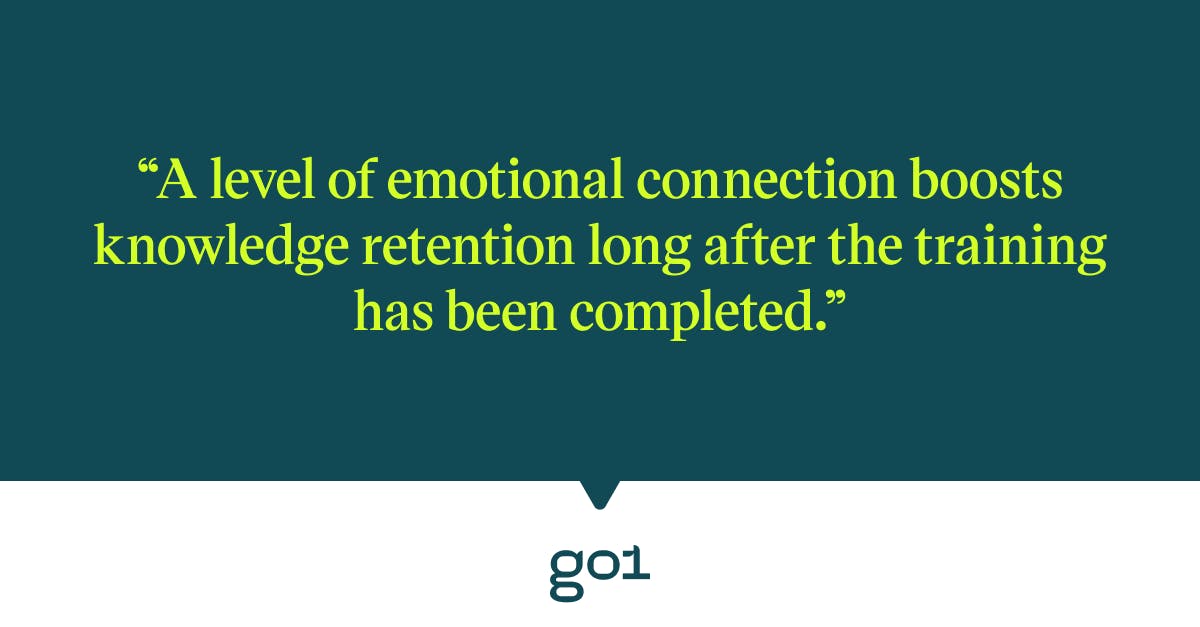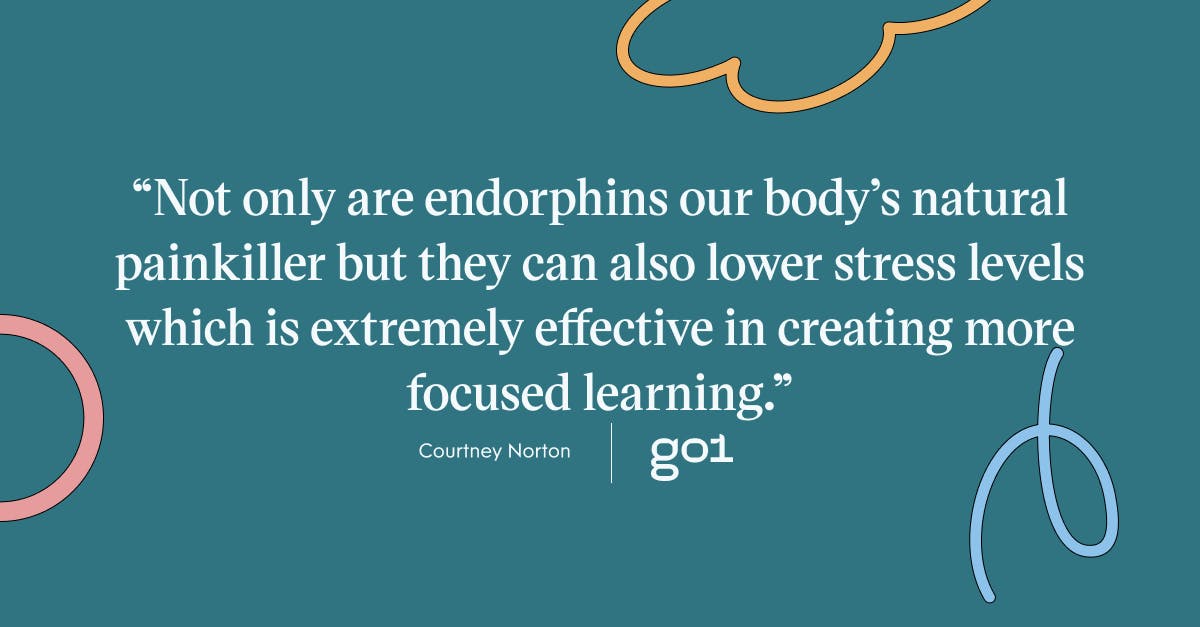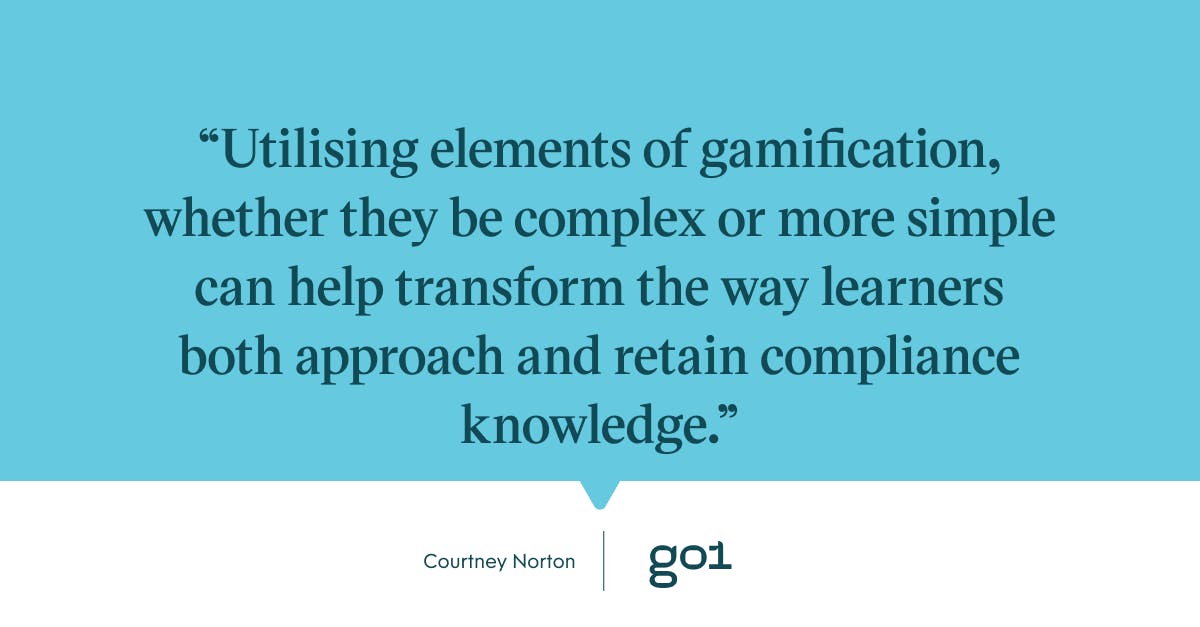
Level up your compliance training with gamification

Learning on the job can be exciting, especially when it’s about something interesting like a new technology for the field or hearing from an industry leader about their experience. And while it is essential to any effectively functioning workplace, what’s not likely to get any gasps of excitement is workplace learning centred around compliance.
Before you prepare the airhorns to blast people awake as they doze off during compliance training, there is an easier (and quieter) way: gamification. Gamification can be described as adding elements of game play to an activity. These can be things like point scoring, progress display, and competition with others - but of course there’s plenty more.
Let’s dive into why gamification could be just what you’re looking for to level up your compliance training.
Why gamification?
While turning compliance training into a game may seem like it would lead participants to treat the compliance training less seriously, it actually has the opposite effect. Gamification can drive positive behavioural changes in the workplace.
Part of gamification can involve creating a narrative around the training that helps the learner to know why what they're learning is relevant. For example, including a character in the training based on a hypothetical employee can help the learner to create an emotional connection to the content, which can in turn affect the attention span of learners in a positive way.
Not only can an element of emotional connection affect the attention span of learners in a positive way while the training is being conducted, it also boosts knowledge retention long after the training has been completed.

Another way in which gamification proves to be extremely valuable in the workplace is that it helps to highlight any competency gaps. For instance, if you use gamification in the form of a point scoring system as part of your compliance training, and find that there’s a particular policy employees tend to score poorly on, it could be a sign that you need to increase focus on that policy. Or revisit that training more frequently than you would have otherwise.
It doesn't have to be complicated
The idea of introducing gamification to compliance training may seem complex. After all, creating an entire game can take a significant amount of time; time that many businesses simply don’t have. However, it doesn’t have to be like that. Gamification can be introduced slowly at first, in really simple and easy ways.
For example, rather than showing a participant that they're on page four of goodness knows how many pages of compliance training, why not use a progress bar instead? That way, participants can clearly see how far they’ve come and how far they’ve got to go.
Not only can this help to motivate learners and encourage them to continue, it can also help them plan the rest of their workday based on how long the training might take.
The neuroscience behind gamification
Gamification isn’t just about making a typically unexciting activity like compliance training ‘fun’. Though fun is certainly part of it, there is also real science behind gamification and how it can make learning more effective. In addition to making the knowledge learned during compliance training easier to retain.
You may have heard about the feel-good hormone ‘dopamine’. It's a hormone that’s released when we are rewarded for completing a specific task. In terms of compliance training, this could be something like giving the learner a virtual badge when they complete a stage of the training, or even having a triumphant trumpet sound play when they get something correct.
Whether you’re already a fan of video games or prefer to stick to board games, we’re all familiar with the thrill and excitement that often comes with playing. The reason why we feel this way is because of the endorphins being released. Not only are endorphins our body’s natural painkiller (how cool is that!) but they can also lower stress levels, which is extremely effective in creating more focused learning.
When learners are more focused on the content they’re learning, they’re more likely to retain it. In the case of compliance, this means learners would be more focussed on critical workplace policies for which there could be a number of consequences if not followed.

If put on the spot, even the most dedicated team member could be hard pressed to remember the details of all the workplace policies off the top of their head. There are often so many that trying to remember them all just by reading them or taking notes would create some serious cognitive overload! Gamification helps to break down the learning into smaller pieces which makes it much easier to retain. Learners can also then make connections to different parts of the gamified learning to help them remember certain policies. For instance, remembering that when learning about compliance management, a character was dressed a certain way or a certain style of game was played.
Compliance training may not always be thought of as the most fun aspect of workplace learning and development. But by utilising elements of gamification, whether they be complex or more simple, can help transform the way learners both approach and retain compliance knowledge.

For more insights, be sure to subscribe to the Go1 newsletter to stay on top of all the latest L&D trends. Or, you can book a demo today to find out how Go1 can help with your team’s learning needs.




